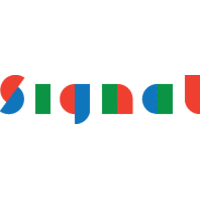
Make no mistake – I really like reviewing album covers for My Type of Music, but it can be a daunting task sometimes. For example last month no less than 95 releases were posted on Metacritic, my source for information. Even simply listing them and identifying the typefaces featured on the covers would be an insurmountable amount of work, considering I need to write other posts as well. It is quite frustrating I can't discuss everything I'd like to. I often have to leave out albums that are musically interesting, just because I don't have anything to say about the artwork and the typeface is not worth mentioning. So, if my selection seems a little random at times… well, it probably is. Here's almost half of the albums from the past month.

We start off with a very witty sleeve, somewhat reminiscent of Never Mind The Bollocks, Here's The Sex Pistols. Frankly if your album title is as crazy as The Body of Christ and The Legs of Tina Turner – the album produced by Andy Gill of Gang of Four for Fight Like Apes, the rock band led by Mary-Kate Geraghty – literally showing that on the cover will work fine. The typeface is the ubiquitous Futura.

Even funnier is Hotel Shampoo, Super Furry Animals' Gruff Rhys inventive and mellow third solo album, with influences ranging from Latin to lounge music. The thirteen songs are represented as colourful shampoo bottles on a shelf in a department store, with the running times integrated in the price tags below each one of them. The song titles on the bottles are inventively designed, using both type and lettering. Typefaces include Eurostile (Shark Ridden Waters), House Movements Custom (Honey All Over), Jim Spiece's Quaint Gothic (Desdemona) (Sensations in the Dark), Cooper Black (Vitamin K), Gandy Dancer (Take a Sentence), Pretorian (Conservation Conversation), and ITC Edwardian Script (Christopher Columbus), and SF Fortune Wheel Bold (Patterns of Power). The speech bubble script used for If We Were Words (We Would Rhyme) could be any of the comic lettering styles of Comicraft, but I've got better things to do than try to hunt that one down.
A big thanks to Typophile's incomparable Type Identification Board for their help with this one.

Albums that treat their sleeve as miniature posters usually are quite successful. The Double Cross, Canadian rock band Sloan's 10th album released on the 20th anniversary of its first show, has a simple collage of the four band members in monochrome purple on a bright yellow background. The image treatment is somewhere between bad quality photocopy and pencil transfer rubbing, with convincing results. The bracketed modern display serif at the top is Modern No. 20.

Retro has never been away from album sleeve design, with different approaches and varying degrees of success. Due to its very nature Turtleneck & Chain – the follow-up to the 2009 parody debut album by The Lonely Island, the trio led by Saturday Night Live's Andy Samberg – opts for an ironic interpretation. The group shot is a flawless depiction of a sixties pop band, pure teenybopper porn. All the elements click: the turtlenecks and chains from the album title with the white jeans, the fur sofa, the sun glasses and cocky attitude,… I really like how the authentic-looking colour scheme of cyan and beige is reprised in chubby Cooper Black.

We switch our focus from the band to the audience on Stone Rollin' by soul singer Raphael Saadiq, an album blending his trademark 1960s-inspired vintage R&B sounds and smooth soul-pop. The typography is not as good by far. Whereas the line of type in the Lonely Island cover is very well set, and perfectly positioned and sized, the typographic composition on Stone Rollin' looks unnecessarily convoluted.
For starters ITC Conduit for the album title is an anachronism. There are more than enough historically correct alternatives to be found in our Compact Sans Serifs FontList. To add insult to injury, the bottom word was squooshed™ to make it as long as the top one while keeping it the same size. However at the left the bottom word was resized to make first and family name the same length. Call me old-fashioned; I had preferred the typographic interventions to be consistent. On top of that the designer felt adventurous and "tried something else" with Bodoni Poster Compressed, using a single oversized "A" for the second letter in both first and last name of the artist, and using the regular Bodoni Poster weight for the final "Q" to make it fill up the remaining space. In my opinion the only way this could have worked was if the weight of the large "A" had been customised to make it better fit the surrounding letters, but even then its triangular shape would still have made it clash into the initial "S" in the bottom line. And the position of the type cluster in the lower right corner looks quite random.
Now compare this to the lovely cover for his Almost Blue — Album Covers Inspired By Blue Note Records. That's what I call a great interpretation of vintage design.

The two previous albums merely reference the sixties. Booker T. Jones has actually lived them, as he entered into professional music in 1960, at age sixteen. The legendary three-time Grammy winner and Rock & Roll Hall of Famer returns with The Road From Memphis, a solid soul and funk album featuring guest appearances by Sharon Jones and Lou Reed. The nice, colourful collage in an octagon shape loosely interprets the album title. However the star of this cover undeniably is the stencil variant of Eames Century Modern, Erik van Blokland's glorious typographic interpretation of the Eames aesthetic.

Next we have two album covers featuring minimalistic geometric art in a row. I don't know what to make of Gangs, produced with Ricky O'Reilly for Belfast rock band And So I Watch You From Afar. What is the meaning of this shape, and how does it relate to the band, the music, or the concept of the album? Were the little objects emanating light beams lifted from a video game of some sorts, or do they come from the world of science, or science fiction? Whatever it may be, Charlemagne seems like a typographic mismatch.

Similar concept, easy to understand concept, much better results. The simple symmetric artwork for Simple Math, the third album of grunge-y indie-pop by Atlanta alternative band Manchester Orchestra could have been designed by Peter Saville. The delicate grey on pristine white is the perfect solution for the geometric shapes, which are nicely complemented by Futura caps. Given the obvious 80s influences I agree with the type selection this time. The red half-tone bar in the bottom right corner subverts the perfect symmetry and brings this thoughtful design home.

More minimalistic geometry on the FUSE. The crossed "M" is reprised for the general image on the front. On the inside of the gatefold cover the darkened portraits of the three band members immediately reminded me of the very similar triptych inside Massive Attack's Mezzanine. Inhowfar was the former "influenced" by the latter?

Matraca Berg, the singer-songwriter who has written songs for such artists as Reba McEntire, Trisha Yearwood, Patty Loveless, Faith Hill, and Martina McBride amongst many others returns with The Dreaming Fields, her first album in more than a decade. The photograph of the artist is very standard fare, with the artist's name emphasizing the horizontal divide between grass and shrubs.
Although at first sight the bracketed slab serif looks like the ubiquitous Clarendon, it is in fact Chauncey H. Griffith's Ionic No. 5 (digitised by Bitstream as News 701). Originally drawn to withstand printing in small sizes in less than optimal conditions, the face reveals surprising details in its letter forms when used big, and has a kicking italic. News Gothic by Morris Fuller Benton used for the album title was re-imagined and integrated in Font Bureau's 128-style Benton Sans mega-family, the most comprehensive of the Trade/News Gothic alternatives.

The photograph of Texas-born singer-songwriter Sarah Jarosz on her album Follow Me Down on the other hand looks far less standard. Two different portraits were split horizontally and joined, with the classic Adobe Original Minion in an ornate frame overlaid on the picture. Quite surprising.

Sometimes the typeface used in a design can really put you on the wrong foot. I personally don't associate Changing – which was used on Kitty Wells Dresses: Songs of the Queen of Country Music, a collection of covers of country music's first female star Kitty Wells by Laura Cantrell – with country music at all, but more with jazzy lounge.

This purely typographic album sleeve however really nails the spirit of Americana. The Worn/Weathered/Stamped Look.

From rough and earthy to slick and spacey. Disc-Overy, London rapper Tinie Tempah's debut of hip-hop and pop jams appropriates the same shiny science fiction style popular with other acts like Lupe Fiasco, Kelis, Janelle Monae, J-Lo, and so on. I quite like the spiky extending corners in the (custom drawn?) extreme extra bold display face.

Although it doesn't really reference science fiction, the photograph of a sterile hallway on the cover for Destroyed – recorded while on tour and described by Moby himself as a "soundtrack for empty cities at 2 a.m." – reverberates with echoes of 2001 – A Space Odyssey and THX 1138. There are several digital fonts mimicking dot matrix letters as seen in the display attached to the ceiling. This is a great album cover, and Moby's name set centred in the lower area in a compact sans proves that type doesn't need to be set big to be powerful and have impact.

What struck me this episode is the large amount of illustrated covers, covering the whole spectrum from comic book art over graffiti and tattoos to "proper" art. The album cover for Inclusions, the second solo album for Ben Sollee, the classically trained pop cellist from Kentucky belongs to the last category. The artist explains the concept behind his record:
This record embodies the people, places, and things of my life. Whether intentional or incidental, their inclusion has come to define much of whom I am.
Collaborating with local visual artist Phillip March Jones, the album art provides a visual interpretation of the allegory of the album – his community and relationships making up the multiple facets of Inclusions. It is very difficult to make out at this size, yet I think the serif face could be Adobe Jenson or ITC Legacy Serif, or another interpretation of Nicolas Jenson's seminal typefaces. The connected script is obviously hand drawn.

Over to comic book art with Roadkill Rising – The Bootleg Collection: 1977–2009, the remastered four-disc set collecting live recordings from several semi-authorized bootlegs of Iggy Pop concerts from around the globe over the past 20-plus years. The artwork was done by William Stout, an American fantasy artist and illustrator with a specialization in paleontological art who is famous for his Smokin' Pig TMoQ vinyl bootleg covers from the 1970s. The creepy atmosphere is extended in the hand drawn lettering reminiscent of vintage horror comics. Comicraft and Device Fonts amongst others have managed to capture the spirit of pulp literature and comic book lettering in many of their digital fonts. For example Agent of the Uncanny and Destination Unknown strike a chord similar to the lettering of the album title.

The comic book-style art on the sleeve for Brilliant! Tragic! by Art Brut, on which lead singer Eddie Argos tries out his new singing techniques with the help of producer Frank Black, looks decidedly contemporary.
It was drawn by British cartoonist and illustrator, and good friend of the band Jamie McKelvie, who was dubbed "one of the major new talents of the decade" by legendary author Warren Ellis. As the band explain on their website there's more comic book connections to this album.
In glorious celebration of the imminent release of Art Brut's Brilliant! Tragic!, a rag tag group of comic book magicians have come together for an exclusive project. Each one of the shining ten album tracks has been given to ten artists to interpret as they see fit. (…) You can find the complete list of artists here, including Bryan Lee O'Malley, Hope Larson, Jamie McKelvie and Jeffrey Lewis. Going to print soon, for all you geeks out there, this is a pretty exciting one.
The squarish slab serif is Vitesse by Hoefler & Frere-Jones, originally designed for Wired. It was selected by Hannah Donovan who designed the album packaging.


From up-and-comer to genuine comic book royalty – the cover art/portraits for Everything's Getting Older, the result of a more than eight years long collaboration between composer Bill Wells and Arab Strap's Aidan Moffat, were produced by Frank Quitely, the world renowned comic book artist famous for his work with Grant Morrison on New X-Men, We3 and Batman & Robin. I asked Aidan Moffat how he managed to rope such a high-profile artist into doing the illustrations for his album.
I do the odd bit of design work for my record label, Chemikal Underground, and I was putting one of his designs for a 7′ single by The Phantom Band into the right template. I managed to sneak a question about Batman into an email – his Batman & Robin work with Grant Morrison had just been announced at the time – and he sent me some scans of unfinished pages! It turned out he was a fan of my old band, Arab Strap, and we just got talking from there. We ended up talking about doing a children's book together, but the more we found out about the literary world, the less appealing it became, and I'm not sure it'll ever happen now.
This album deals with themes of ageing. I originally wanted to get pictures of Bill Wells and myself professionally aged in Photoshop. But then I realised that Quitely would be perfect for the job. He has an incredible way with detail, and his style has the perfect balance of seriousness and fun that I wanted for the cover. Frank seemed to like the idea straight off, and I just left him to it. All I asked is that he make it as frightening as he could, and he must have succeeded because it's the first 12″ LP of mine that my mother doesn't want. She can't bare to look at it!
We talked about colouring it too, but I really liked the drawings the way they were. I had wanted to have a minimal and monochrome feel to the outer cover anyway, with the colourful stuff tucked away inside, and each of the portraits on opposite sides so that there isn't really a designated front cover and it can be displayed either way.

On the version with type of the album cover the typical ampersand gives away that the square sans is Mark Simonson's Refrigerator Deluxe. The original Refrigerator dates back to 1988 as one of Mark's earliest PostScript typefaces. Its concept was very simple: a blocky, condensed sans serif with rigidly geometric forms. The Deluxe version released 20 years later extends the original family from a specific vernacular style to an anthology of vernacular styles through the extensive use of alternate characters, accessible through OpenType Stylistic Sets. These range from squared off, closed shapes, with a minimum of angled strokes, to open, stylized shapes with more of an Art Deco feel. Using different combinations of these alternates, Refrigerator Deluxe can take on an endless variety of appearances from basic block to high style.

From comic book art to art you wear on your skin. The album cover for Laugh Now… Laugh Later by veteran SoCal punkers Face to Face was drawn by renowned tattooist Corey Miller. As he is a cast member on the television show L.A. Ink we get a rare glimpse at how he was commissioned to do the album cover art, and how he even was the one to come up with the album title.
While tattooing a member of the band Face to Face, Corey receives an offer he cannot refuse.
Meeting the band Face to Face in the recording studio, Corey shows off the band's new album cover and leaves them speechless.
It goes without saying the lettering was also hand drawn by Corey. Noblesse oblige.

Inspired by Italian film scores from the 1960s and featuring guest vocalists Norah Jones and Jack White (The White Stripes, The Raconteurs, The Dead Weather), Rome is producer Danger Mouse's pet project with Daniele Luppi. The bold, rounded illustration of a dripping black heart with highlights owes more to graffiti art. Fortunately the designer stayed away from using the equally round and highlighted Frankfurter. The juxtaposition of the bold stylised graphic with the classy typography – the classic Caslon 540 in combination with some stylishly spaced Futura caps – works wonderfully well.

Another design in the graffiti atmosphere is the album sleeve for Give Till It's Gone, Ben Harper's first solo album of soul, reggae, and rock since 2006. This one looks equally rooted in stencil graffiti and propaganda poster art from the first half of the previous century. The red hand with blue waves erupting from its outstretched palm is a quite literal yet effective visualisation of the album title. The skyline sans is H&FJ Knockout, Hoefler & Frere-Jones' interpretation of "gothic woodtypes in a dazzling array of proportions" predating Helvetica by more than a century.

More stencil design on the cover for Own Your Ghost, a new album of genre-bending music by 13 & God, the collaborative project of the California rap collective Anticon and German experimentalists The Notwist. The band name in a stencil blackletter is cut out in transparent white overlaid on a skull illustration, revealing the coloured drawing within its letter shapes.

While I intrinsically have no problems with the concept of illustrated covers, there's always a lazy indie rocker that manages to get me in a mighty foul mood. The culprit du jour is the appallingly poor album cover for Demolished Thoughts by Thurston Moore, the Sonic Youth guitarist's fourth album, produced by Beck, and featuring guest appearances by Bram Inscore, Mary Lattimore, Samara Lubelski, and Joey Waronker. Listen, I don't friggin' care if you're one of the most respected indie musicians from the past couple of decades – having a crappy drawing for your record sleeve is not cool nor hip, it simply is crap. The drawing is fugly, the composition makes no sense, and that dodgy digitisation of the Victorian typeface Abbott Old Style really doesn't help.

Please don't get me wrong; I don't think all album cover illustrations need to look "professional" and do appreciate a certain amount of naivete now and then. A nice example is Diaper Island, the fourth full-length solo album by Chad VanGaalen who returns from producing Women's 2010 album Public Strain. Besides being a songwriter and musician, VanGaalen is also an illustrator and animator. He has made his own album artwork and animated music videos to accompany several of his songs, including Clinically Dead, Flower Gardens, Red Hot Drops, and Molten Light, as well as the Love as Laughter song Dirty Lives and Not Enough by J Mascis. He has also designed album covers for other artists, including Shout Out Out Out Out's Not Saying/Just Saying.
The line drawing of a waterfall in the woods looks lovely, with pine and olive green colour lines accentuating the black ones, adding depth and warmth. The blocky hand lettering nicely complements the illustration style. Having the letters reversed white out of black improves legibility whilst integrating even better the text in the drawing.

Another beautiful line drawing enhanced with sparse splashes of ochre is Torches, the debut album of the Los Angeles indie rock band Foster the People. It is by 22-year-old singer, producer, graphic designer and man about town Japayork. Mark Foster of Foster The People in an interview with Shahlin Graves for Coup de Main magazine:
My good friend Japayork did [the artwork] for us. He's just a super talented guy and I've been friends with him for years. When I was a solo artist he would do art for me for free, and I was like: "Dude, I promise, one day I will be able to pay you for this, just have faith in me." And now we get to pay him for it! Which is awesome. He's Dutch so he's from the Netherlands, but he lives in London now. He's been doing all of our artwork and t-shirts and stuff.
The beautiful scary/cute illustration is loads of fun. It spoofs the archetypical lynch mob in old monster films, brandishing torches – well, sort of. Alas the cover is marred by the inexcusable use of that limp Helvetica knock-off Arial.

Strange Negotiations, the second solo album for Seattle-based indie singer-songwriter and former lead singer of Pedro the Lion David Bazan features a wonderful yet slightly strange photograph on its cover – the combination of an elderly man and a nude woman creates an intriguing tension, challenging our preconceptions. It was taken by Juco Photo, the collaboration between Julia Galdo and Cody Cloud. The image belongs to a series called Pet that was featured in S Magazine; about a tender relationship between a very old man and a really beautiful young woman as Julia Galdo explains.
David Bazan and my partner Cody Cloud have known each other since they were two. They grew up together in Arizona and are very close friends. Bazan approached us about using this photograph for the cover, as it seemed like a very fitting visual for the title of the album. Of course, we were happy to support our friend and be a part of his work.
Typographically speaking the cover is rather pedestrian – album title and artist name set in all caps Helvetica, safely centred in the upper region of the image. It's better than the fake Helvetica used on the previous cover, yet far less good than the next one.

Damon & Naomi, the duo who were part of Galaxie 500 returns with False Beats and True Hearts, their fourth album with Ghost guitarist Michio Kurihara. This sleeve too features a really beautiful photograph, this one by French photographer and writer Bernard Faucon. The type treatment however is far more successful – even with the alternates I recognised Kris Sowersby's lovely sans family National straight away. Damon Krukowski hooked me up with Naomi Yang, the other half of the duo, who designed the album cover.
I first saw Bernard Faucon's work several years ago, at his retrospective at the Maison Européenne de la photographie in Paris. I was very taken with his striking imagery and always remembered it for its graphic design potential. Often I use my own photography in my graphic work (from the Galaxie 500 album covers to our Exact Change book covers) but I really didn't think I had anything that was the right mood. Our last album was a very dark one but the songwriting and mood on this new album was deliberately more cheerful and uptempo. I wanted to signal a lighter spirit, use something more joyful with a bit of whimsy for the cover. I also thought the False/True in the title worked well with the image of (artificial) mannequins in a (natural) landscape.
I will often bookmark fonts/foundries that interest me. Then, when I have a new project and an excuse to buy a new font, I will go back and look through the bookmarks to see if any of the fonts I noted would be appropriate to the project and a nice addition to my library. I think National, as a font, suited perfectly my agenda of indicating that this new album was more joyful. The fact that it is a sans serif of lovely proportions but with those little curly serif-y tails made it seem very cheerful, and I loved the way all the different extreme weights worked so well together. I kind of went to town on the display type and cover and used three weights! And I really like all the alternates – I substituted the "a", the "y" the "g" and the "R" for an added kick. By the way, I would never use Helvetica; it's like admitting defeat! Now Futura, that's a different matter…

More wonderful – and very colourful – imagery can be found on Pala, the second album by British dance trio Friendly Fires, which was produced by Paul Epworth. The photograph of a red-and-green Macaw taking off is delicately overlaid with white Neutraface caps for the band name and large translucent ones for the album title – the same typeface as on their self-titled debut album.

You may have noticed that I like to shuffle albums around in my lists to create logical transitions, juxtapositions, and common threads. We go from the full bird to an equally vibrant picture of feathers on Smother, the British quartet Wild Beasts' follow-up to its 2010 Mercury Prize-nominated album Two Dancers, produced by Richard Formby. The typeface is one of those typical 80s serif display faces. Accolade is so uncool it looks cool again.

Let Them Talk, the debut album of blues music produced by Joe Henry for Hugh Laurie goes the safe route. I mean, if the artist is the extremely bankable lead actor in the popular TV show House M.D. one can hardly argue against the decision to put his portrait really big on the cover. The art director/designer had some multi-hued fun with FF Meta for the album title. The only thing I don't understand is why the "TH" in "THEM" wasn't joined while all other possible instances for making connections were used.

When going through last month's album reviews on Metacritic I was struck by the artwork for One Thousand Pictures, the sophomore album produced by Brendan Lynch for British indie rock band Pete & the Pirates. The upside-down monochrome image of a deserted island in intense red – subtly skewing the viewer's expectations – is framed by an lush engraving of exotic birds and plants. It conjures up visions of a paradisal place where the pirates mentioned in the band name set foot. The distressed sans beautifully complements this lovely album cover.

We go from nature unspoiled by man to an entirely man-made urban landscape. Valleyheart, the third full-length by Los Angeles synth-pop, dark wave group She Wants Revenge, released nearly four years after their last album, shows a nightly wide shot of a metropolitan area with colourful fairy-tale lights. No, this is not a customised ITC Avant Garde Gothic but Litera, designed by Michael Neugebauer and Brendel Typestudio more than a decade after the ubiquitous geometric sans serif.

I don't get how Lady Gaga, the reigning pop queen and purportedly most influential person in music can have such an amateurish sleeve for Born This Way, her second full-length studio album. The concept is poorly realised, the composition of the image is lacking, the execution is muddy, and that smudgy metallic treatment of Gotham made me throw up in my mouth a little.

I largely prefer the oblique minimalism of Heavy Rocks, the Japanese experimental band Boris's 16th album which seeks to redefine heavy music. The simple purple cover draws full attention to the typography. The band name was rendered in bulbous faux-Asian upright-script-like letters, and psychedelic/Art Nouveau display face Karolla was used for the album title.

Boris' 17th studio album Attention Please shares the same release date as Heavy Rocks. Although University is guaranteed to make me cringe, the combination with the black lace in what could pass for an image from a fashion shoot and the intertwined ornate Victorian initials somehow make this abomination from the early 90s palpable.

It's back to the 80s on the self-titled album debut album for New York indie pop artist Darwin Deez finally reaches the US after a successful release in the UK in 2010. For unclear reasons the rope serving as a headband in the close-up portrait of the artist is accentuated with a string of small white squares. The texture of the (probably genuine) distressed typewriter is very similar to the HD Pro version of Erik van Blokland's seminal FF Trixie.

On Diamond Mine King Creosote collaborates with electronica producer Jon Hopkins to rerecord seven of his songs. The album was made to look like the cover for a photo album. I am a sucker for aged vintage photographs; the yellowed paper, the sepia tones, the worn edges and blunt corners, the creases and rips hint at past lives rich with memories. Although in this case the edges are too clean, the stained linen background with embossed stamp adds to the authentic look. Having the names of both artists handwritten in pencil at the bottom of the photograph is a fun detail, as if they actually are the two old guys in the picture.

A daily dose of silly helps you stay positive, and the illustration on Sugar Daddy Live, an album featuring fan favourites recorded at The Busta-Guts Club in Southern California by legendary grunge rockers The Melvins, sure does a spiffy job. The horrendous Helvetica Narrow threatened to wipe the smile of my face caused by the dazed and confused look on the two cartoon pigs. Fortunately the deliciously naive school script in text balloons and photo-realistic thigh bones narrowly (Get it? Get it? Wink wink, nudge nudge) restored the balance.

Another album that instantly made me chuckle – yet for entirely different reasons – is Unfinished, the "buffed, shined, and (sometimes conspicuously) Auto-Tuned" album by New Kid on The Block Jordan Knight. The conspicuous crotch shot in combination with the surly look on the singer's face and the big red "Unfinished"… well, I don't think I need to explain this. The only interesting thing about this album – musically and graphic design-wise – is the use of Venus Extended instead of the obligatory Neue Helvetica Extended or Standard Extended. More wide grotesques can be found in our handy FontList.

Another artist of my youth, Kate Bush reworked and rerecorded some of her songs from 1989's The Sensual World and 1993's The Red Shoes albums on Director's Cut. The strip of photo negatives featuring the covers of both those classic albums is an overly obvious reference to the album title and content, yet it produces a tasteful, classy image. The Univers 39 Ultra Condensed Thin capitals in black and grey lend this design that typical late 80s, early 90s atmosphere.

The macro shot of a hash key on the cover for Codes and Keys by the melodic emo chart-toppers from Washington Death Cab for Cutie, is also a very obvious reference to the album title. The rough texture of the key nicely contrasts with the refined smoothness of Linotype Didot. Only point of critique – it is used too small, making the hairlines virtually disappear and the characters break up in separate pieces.

We end this meaty episode of My Type of Music with albums by both members of The Last Shadow Puppets. With Colour of the Trap The Rascals singer Miles Kane releases his solo debut, which features such guests as the Arctic Monkeys' Alex Turner, Super Furry Animals' Gruff Rhys, and Oasis' Noel Gallagher along with production work by Dan Carey and Dan the Automator. The cover is very simple – a stylish black-and-white portrait of the artist with spaced Alternate Gothic caps in subtly transparent pink.

The cover for Submarine (Original Songs from the Motion Picture), the soundtrack for the British movie written and performed by Arctic Monkeys singer Alex Turner actually looks quite similar. Here the type is a bizarre amalgam of letters from disparate typefaces – I think I detect Century Gothic, DIN, ITC Avant Garde Gothic,… Although it produces some really iffy spacing, the arrangement of the characters in a 3 × 3 square in three desaturated colours works wonderfully well, and the transparent blue covering the lower portion of the image is a nice pun on the movie title.








